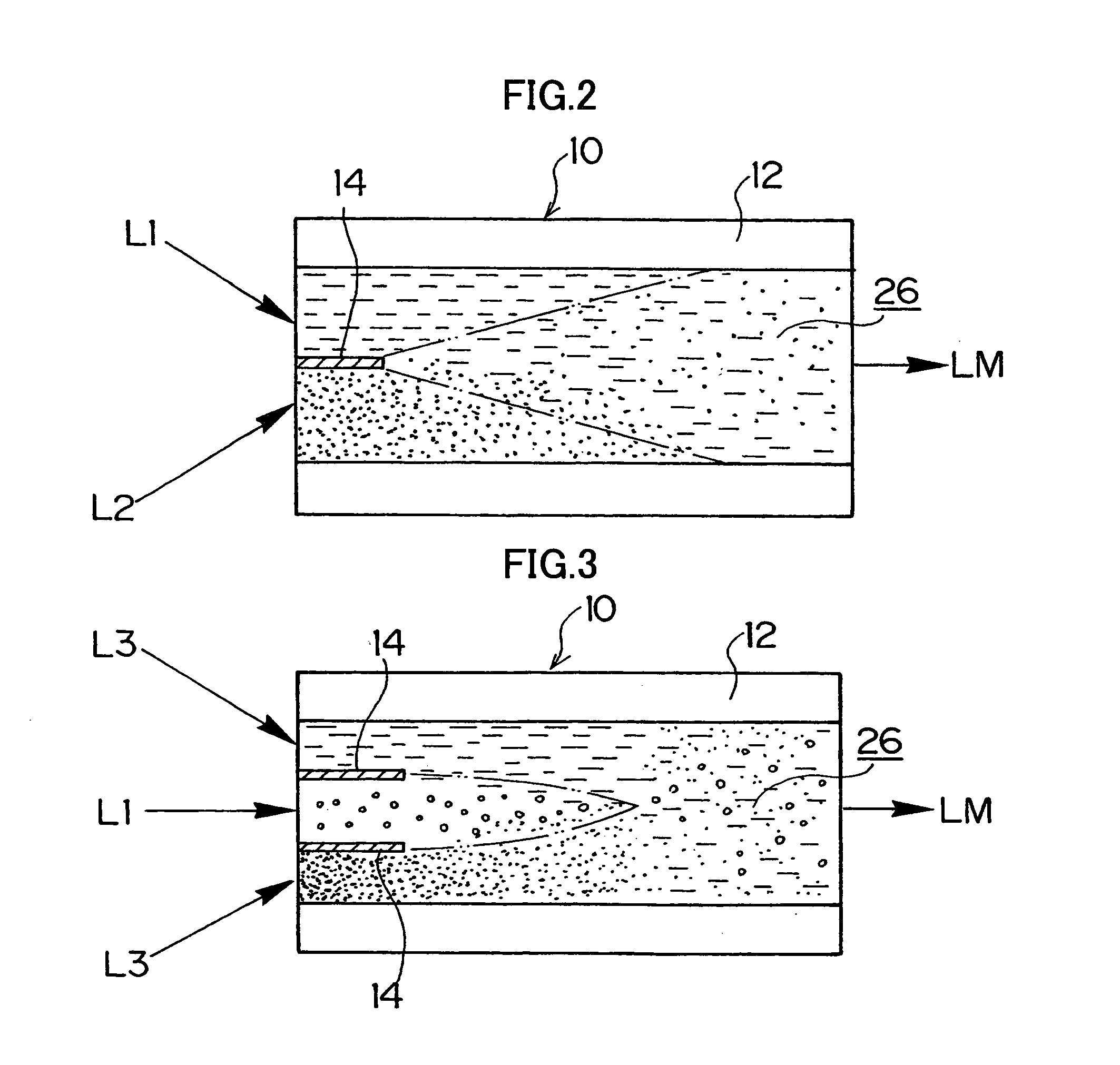Method of producing magnetic particles and reaction method using microreactor and microreactor
a technology of microreactor and reaction method, which is applied in the direction of magnetic materials for record carriers, magnetic bodies, transportation and packaging, etc., can solve the problems of line instability, inability to produce minute alloy particles excellent in monodispersibility and excellent in ease in transformation, and inability to use conventional microreactors for the reaction where by-product gas is not available, etc., to achieve excellent in monodispersibility, excellent in ease in transformation, and reduce noise
- Summary
- Abstract
- Description
- Claims
- Application Information
AI Technical Summary
Benefits of technology
Problems solved by technology
Method used
Image
Examples
first embodiment
[0320]FIG. 9 is a perspective view illustrating the concept of the microreactor according to the first embodiment of the present invention, which is laminate flow microreactor 200. FIG. 10A is a top view of a microreactor main body (hereinafter referred to as main body 212) and FIG. 10B is a cross-sectional view taken on line a-a of FIG. 10A.
[0321] As shown in FIG. 9, laminate flow (substantially synonymous with parallel tube structure) microreactor 10 is mainly composed of a main body 212, liquid supply devices 216 and 216 which supply liquids L1 and L2 for liquid-liquid reaction to the main body 212 via liquid supply pipes 214 and 214, and a gas supplying device 220 which supplies gas G unreactive to liquids L1 and L2 for liquid-liquid reaction to the main body 212 via gas supply pipe 218. In this embodiment, explanation is made referring to an example of a liquid-liquid reaction involving generation of by-product gas using two liquids L1 and L2.
[0322] As shown in FIGS. 10A and ...
second embodiment
[0344] Next, an annular flow (synonymous with concentric multi-cylindrical structure) microreactor 260, which is the second embodiment of the microreactor of the present invention is described. Explanation is made referring to a liquid-liquid reaction using two liquids L1 and L2.
[0345] As shown in FIGS. 15A and 15B, the annular microreactor 260 is formed into a substantially columnar shape as a whole and provided with a circular pipe member 262 which constitutes the outer shell of the main body.
[0346] The straight line S in the figure indicates the axis of the reactor and the following description will be made referring to the direction along the axis S as the axial direction of the main body. At the tip of the circular pipe member 262 is opened a discharge opening 264 for a reaction product solution LM produced by the reaction of the liquids L1 and L2, and a ring-shaped flange part 266 is provided at the tip of the circular pipe member 262 to be extended toward the outer peripher...
third embodiment
[0360]FIG. 18 is a perspective view illustrating the third embodiment of the present invention, which is a laminate flow microreactor 400. FIG. 19A is a top view, FIG. 19B is a cross-sectional view, and FIG. 19C is a bottom view of a microreactor main body (hereinafter referred to as main body 12).
[0361] As shown in FIG. 18 the laminate flow microreactor 400 is mainly composed of a main body 412 equipped with a gas permeation member 418, liquid supply devices 416 and 416 which supply liquids L1 and L2 for a liquid-liquid reaction involving generation of by-product gas to the main body 412 through liquid supply pipes 414 and 414 and a pressure control device 446 for improving the gas permeability of the gas permeation member 418. In this embodiment, explanation is made referring to an example of a liquid-liquid reaction using two liquids L1 and L2.
[0362] As shown in FIGS. 19A to 19C, the main body 412 is assembled by bonding a main body member 422 and lid member 424 by an adhesive ...
PUM
| Property | Measurement | Unit |
|---|---|---|
| Temperature | aaaaa | aaaaa |
| Temperature | aaaaa | aaaaa |
| Temperature | aaaaa | aaaaa |
Abstract
Description
Claims
Application Information
 Login to View More
Login to View More - R&D
- Intellectual Property
- Life Sciences
- Materials
- Tech Scout
- Unparalleled Data Quality
- Higher Quality Content
- 60% Fewer Hallucinations
Browse by: Latest US Patents, China's latest patents, Technical Efficacy Thesaurus, Application Domain, Technology Topic, Popular Technical Reports.
© 2025 PatSnap. All rights reserved.Legal|Privacy policy|Modern Slavery Act Transparency Statement|Sitemap|About US| Contact US: help@patsnap.com



